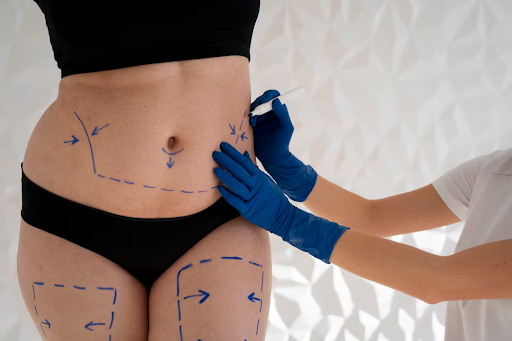Key Takeaway: Mermaid Family Practice is the premier destination on the Gold Coast for skin checks and general practice. With a commitment to exceptional care, advanced diagnostics, and personalized treatment, our skin cancer clinic sets the benchmark in protecting and maintaining your skin health.
Skin cancer remains one of the most prevalent health concerns in Australia, with significant sun exposure increasing the risk of developing various forms of the condition. Early detection and treatment are key to preventing serious complications, making regular skin checks essential. At Mermaid Family Practice, we’re dedicated to providing comprehensive skin cancer screenings and treatment services on the Gold Coast, ensuring your skin remains healthy and protected.
Why Regular Skin Checks Matter
Australia experiences some of the highest rates of skin cancer globally. Prolonged exposure to ultraviolet (UV) rays, a common part of the Australian lifestyle, increases the likelihood of skin damage and cancer development. Regular skin checks can:
- Detect early signs of skin cancer.
- Identify unusual moles, freckles, or spots that may require further investigation.
- Ensure peace of mind by monitoring any changes in your skin’s appearance over time.
Our experienced professionals at Mermaid Family Practice are committed to thorough examinations tailored to your individual needs.
Skin Clinic Services Offered
At our dedicated skin clinic, we employ cutting-edge technology and evidence-based practices to deliver unparalleled care. Our services include:
1. Comprehensive Skin Cancer Screening
Our expert team uses advanced dermoscopy techniques to carefully assess your skin. Early diagnosis significantly improves outcomes, and we recommend annual skin checks for Gold Coast residents.
2. Treatment Options
Should a skin cancer diagnosis be confirmed, we offer:
- Cryotherapy: Effective for treating sunspots and some early-stage cancers.
- Surgical Excisions: Performed with precision to remove suspicious lesions or confirmed cancerous spots.
- Topical Therapies: Prescription-strength treatments designed to target specific cancer cells.
3. Ongoing Monitoring
For patients with a history of skin cancer, ongoing monitoring is crucial. Our clinic’s comprehensive tracking system ensures that any changes are promptly addressed.
What Sets Us Apart as the Best Skin Cancer Clinic?
Choosing the right clinic for your skin health is vital. Mermaid Family Practice is recognized as one of the best skin cancer clinics on the Gold Coast, and here’s why:
- Qualified Specialists: Our team consists of experienced general practitioners with extensive training in skin cancer management.
- State-of-the-Art Equipment: We utilize advanced tools like digital dermoscopy to ensure accurate diagnoses.
- Personalized Care: We’re not just a clinic; we’re your health partners. Every patient receives a tailored care plan designed to suit their individual needs.
- Convenient Location: Situated on the Gold Coast, our clinic is easily accessible, making it a top choice for those searching for a “skin clinic near me.”
Understanding Skin Cancer Types
Educating our patients about skin cancer is a priority. There are three primary types of skin cancer:
1. Basal Cell Carcinoma (BCC)
BCC is the most common and least aggressive form of skin cancer. It often appears as a pearly bump or red patch and is typically caused by prolonged sun exposure.
2. Squamous Cell Carcinoma (SCC)
SCC can appear as a scaly red patch, open sore, or wart-like growth. It’s more likely to spread than BCC but is highly treatable if caught early.
3. Melanoma
Melanoma is the deadliest form of skin cancer but also the rarest. It may develop from existing moles or appear as a new, irregularly shaped lesion. Immediate attention is critical for treatment success.
Our team provides detailed explanations and actionable advice during consultations to help you stay informed about your skin health.
Tips for Skin Cancer Prevention
While regular visits to a trusted clinic like Mermaid Family Practice are vital, proactive steps can help protect your skin:
- Apply Broad-Spectrum Sunscreen: Use sunscreen with an SPF of at least 30 daily, even on cloudy days.
- Wear Protective Clothing: Choose wide-brimmed hats, UV-blocking sunglasses, and lightweight long sleeves when outdoors.
- Avoid Peak Sun Hours: Limit sun exposure between 10 a.m. and 4 p.m.
- Conduct Self-Checks: Monitor your skin regularly for changes in moles, freckles, or lesions.
If you notice anything unusual, don’t hesitate to book a consultation at our skin clinic on the Gold Coast.
Internal Links for More Information
Explore additional resources about our services:
Schedule Your Skin Check Today
Don’t delay prioritizing your skin health. Whether you’re due for a routine check-up or need specialized care, Mermaid Family Practice is here to help. Book your appointment today and discover why we’re the trusted choice for skin cancer care on the Gold Coast.








